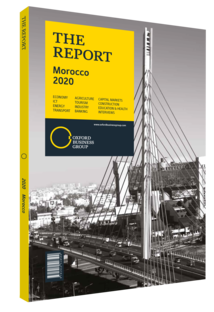Regionalisation plans set to boost economy in Morocco
Morocco is advancing with its regionalisation plans, with the goal of enhancing the transfer of critical development funds to the less-developed regions of the kingdom in order to curb economic and social inequalities. Over the past two decades the kingdom has seen a strong level of economic development that has allowed it to diversify its economy, attract considerable volumes of foreign direct investment (FDI) as well as modernise its infrastructure. However, growth rates have since slowed down. After growing at approximately 4.5% per year between 2000 and 2012, the kingdom’s annual GDP expansion averaged some 3% between 2013 and 2018. However, that economic prosperity is far from evenly distributed. Of the kingdom’s 12 regions, four account for 50% of total GDP.
Local Decisions
Since announcing plans for regionalisation in 2008, King Mohammed VI has promoted the decentralisation of the kingdom’s administrative structure as a means of returning certain powers to regional authorities. The objective is to allow local communities and regional state representatives to have a greater say in how financial resources are used. Under the plan, most decisions related to socio-economic development and political affairs will be brought under the helm of regional authorities. It also seeks to encourage more robust democratic participation of citizens in their regional affairs. In 2011 the new constitution launched the concept of accelerated regionalisation, underpinning the state’s commitment to the plan.
The changes have been incremental, and since implementation began, approximately 70 regulatory decrees have been passed. In 2015 the government transferred a number of key responsibilities in the development of specific regional development plans to the regional councils. These plans guide public policy in terms of economic development, employment creation and infrastructure projects. However, some of these development plans have been difficult to implement, with the Ministry of Interior stating that some had been inadequately structured relative to the budgetary resources that could be disbursed.
Inequality
Regionalisation is being used to address the problem of inequality in Morocco. Large swathes of the country, especially around the country’s northern coastline cities of Casablanca, Rabat and Tangier, have experienced a wave of investment and development since 2005. However, many other regions of the country, especially in the interior and southern regions, are affected by a lack of economic opportunities and inadequate public service provision. For instance, while the unemployment rate in the Casablanca-Settat region is 11% for a population of almost 7m people, the Oriental region, bordering Algeria, has an unemployment rate of over 17% and a population of 2.3m people. The Oriental region’s GDP is Dh46.5bn ($4.8bn), much smaller than the Dh309.1bn ($32.2bn) GDP of Casablanca-Settat. In the Guelmim-Oued Noun region to the south, unemployment affects almost 20% of the population of 434,000. Dealing with the issue has become especially pressing in the wake of the popular protests that erupted in the north-eastern areas of Morocco over 2017 and 2018.
In December 2019 the government announced that over that year some Dh7.4bn ($770.9m) had been earmarked to help reduce regional development gaps. In the 2019 budget, Morocco increased the region’s share of government tax on business and individual income from 4% to 5%, which, according to government estimates, will allow the state to allocate up to Dh10bn ($1bn) per year to regional development by 2021.
It is expected that regionalisation will accelerate the resolution of Morocco’s social inequalities. The IMF stated in its 2019 Morocco report, “Ongoing decentralisation should also allow for better coordination of social spending at the local level.” However, as more financial resources are allocated to the regions, strengthening governance structures will be necessary to maintain public trust in regionalisation and its potential benefits.
You have reached the limit of premium articles you can view for free.
Choose from the options below to purchase print or digital editions of our Reports. You can also purchase a website subscription giving you unlimited access to all of our Reports online for 12 months.
If you have already purchased this Report or have a website subscription, please login to continue.

